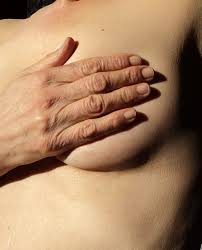What is Lymphedema?
Lymphedema is a chronic condition of local fluid retention caused by damage to the lymphatic system, commonly seen after breast cancer surgery or radiation. As part of surgery for breast cancer, most women have several or many lymph nodes removed from the underarm area. This prevents the lymphatic fluid from being drained properly, and fluid can build up in local tissues either on the side of the chest wall, the underarm area or in the arm or hand, resulting in discomfort. Sometimes there is discoloration of the skin over the swollen area, and increased susceptibility to skin infections. Lymphedema can develop months or years after surgery or radiation, so precautions and preventative measures are recommended.
Lymphedema is assessed and graded in stages:
Stage 0 (latent): The lymphatic vessels have sustained some damage which is not yet apparent. Transport capacity is still sufficient for the amount of lymph being removed. Lymphedema is not present.
Stage 1 (spontaneously reversible): Tissue is still at the “nonpitting” stage: when pressed by the fingertips, the tissue bounces back without any indentation. Usually upon waking in the morning, the limb or affected area is normal or almost normal in size.
Stage 2 (spontaneously irreversible): The tissue now has a spongy consistency and is considered “pitting”: when pressed by the fingertips, the affected area indents and holds the indentation. Fibrosis found in stage 2 lymphedema marks the beginning of the hardening of the limbs and increasing size.
Stage 3 (lymphostatic elephantiasis): At this stage, the swelling is irreversible and usually the limb(s) or affected area is very large. The tissue is hard (fibrotic) and unresponsive; some patients consider undergoing reconstructive surgery, called “debulking”. This remains controversial, however, since the risks may outweigh the benefits, and the further damage done to the lymphatic system may in fact make the lymphedema worse.
Prevention of Lymphedema
The following guidelines will help to prevent lymphedema if you have had breast cancer surgery or radiation:
1. Practice daily stretching exercises, such as the ones provided in chapter two. These can begin a week after surgery and/or radiation therapy, or whenever recommended by your doctor. Continue these exercises up to 18 months after surgery and treatment to maintain your range of motion.
2. Exercise daily. Check with your doctor before starting or resuming an exercise program. If your normal fitness regimen included using arm weights, wait until 2 months after surgery and begin with light weights of no more than 15 pounds. Stop exercising at the first sign of pain. If the arm on the side where you had the surgery becomes tired during exercise, cool down and elevate it.
3. Avoid sudden increases in the amount of physical work performed with the arm on the surgery side (for example, packing up your house for a move). It is important to gradually build up your level of activity with your arm.
4. Maintain an ideal body weight for your age and height. Women who are obese are more likely to develop lymphedema.
5. Wear clothing and jewelry that is loose and does not pinch or squeeze your arm or hand, like a tight sleeve or bracelet does, because this can cause the fluid to build up and lead to lymphedema.
6. Lighten your purse and try not to carry it or heavy bags over your shoulder on the side where the surgery was performed to avoid direct pressure and constriction of your arm.
7. Avoid extreme temperature changes. Having a burn on your hand or arm can increase the risk of developing lymphedema. Don’t use hot tubs, whirlpools, saunas, or steam baths. Use warm instead of very hot water when bathing or washing dishes.
8. Take precautions to prevent sunburn and skin breakdown on the affected arm. Consider covering the arm completely when outside, particularly during the hottest part of the day.
9. Avoid blood pressure readings in the affected arm. Use the opposite arm.
10. When flying, wear a compression sleeve on the affected arm. Keep the arm elevated (above the level of your heart) and flex it frequently during the trip.
11. When sitting or sleeping, elevate the arm on a pillow and avoid lying on the affected side for an extended period of time.
Treatments for Lymphedema
A variety of treatments can help manage and decrease lymphedema. Some can be practiced on one’s own, while others require professional attention.
These include:
- Daily self-care, including dry brush massage, alternating hot and cold showers, rebounding, exercise (40 minutes daily), deep breathing, breast self-massage, going braless so your breasts can move, yoga for the lymphatic circulation
- Compression Garments – when a limb is swollen, elastic compression garments are worn following therapy to reduce and contain the swelling
- Compression Pump Therapy – a multi-chambered pneumatic sleeve is used to compress the arm and promote movement of lymph. This is used along with compression bandaging and manual lymph drainage. Pump therapy can help to soften fibrotic tissue.
- Bandaging or Wrapping – compression bandaging is the application of layers of padding and bandages to the swollen area. During exercise, the bandaging enhances the pumping of the lymph vessels to improve lymphatic circulation.
- Manual Lymph Drainage – consists of manual manipulation of the lymph ducts through gentle rhythmic masage, along with bandaging, therapeutic exercise and skin care to manage lymphedema. This techniques was developed by Emil Vodder in the 1930s. Once the lyphedema is reduced, clients can often manage with self-care, compression garments and exercise.
- Surgical Treatments – several surgical treatments exist for lymphedema if the above methods are not sufficient in managing the condition. These include lymphatic vessel grafting, and transferring lymph nodes from one body area to another along with supporting arteries and veins.




